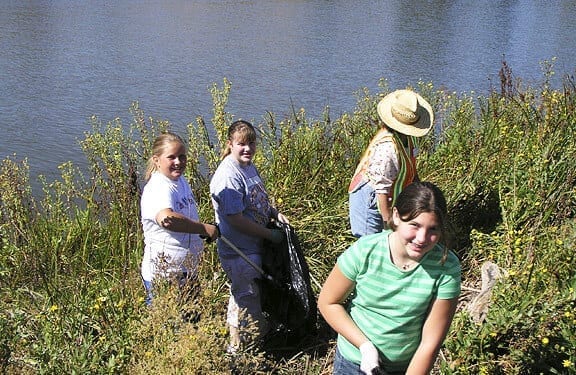Weed Management and Habitat Restoration

- Planting native species, developing public view areas
- Minor trail repair
- Cleaning and repairing kiosks and benches
- Cleaning up trash and debris along trail and river/creek banks
- Monitor habitats and park infrastructure
- Report problems to appropriate city departments
- Provide information to the public
- Maintain site “rules of use”
- Assist city with grant writing and grant management in the wetlands
- Develop educational materials for the kiosks, PWA website, and Facebook
Want to Help?
In 2005 we clipped the seed heads off the Harding Grass to retard their expansion. In December 2005 we wrote a weed management plan with a habitat restoration section and presented it to the City of Petaluma in January 2006. Mechanical portions of the plan were approved in April 2006. That summer we clipped Harding Grass seed heads and dug out nearly three hundred 4×4-foot bags of Italian Thistle, which represented about one third of the Italian Thistles in the park.
In November 2006 the chemical portion of our plan was approved. By January 2007 we were using Roundup to remove the massive Italian Thistle population in Shollenberger. We also sprayed the Harding Grass and removed Cardoon by a cut-and-paint technique. A copy of our weed plan (nearly 300 pages) can be obtained on CD by calling 769-8961. Since the city established a moratorium on the use of Roundup on city properties in 2016, we stopped using Roundup for spraying weeds. We are hopeful that a long-term, low-intensity removal will keep the most nonnative, invasive weeds out of our wetlands. New invasive weeds are constantly appearing in California and will be treated with the “Early Detection, Rapid Response” approach encouraged by the California Dept. of Agriculture and California Invasive Plant Council, Cal-IPC. Help is needed for mechanical removal of weeds between January and June. Use the Volunteer Form to help with this program.
Native Plant Nursery and Habitat Restoration Program
We have access to a native plant nursery at Casa Grande High School developed by Dr. John Shribbs, now retired science teacher and PWA docent, to replace the weeds we remove. The nursery provided nearly 2000 plants between January and April of 2007 and many plants thereafter. If you wish to help with the growing of native plants and planting them to enhance our habitats in the parks, use the Volunteer Form to help with this program.
Maintenance Program
We have several volunteers who go out to the park on a weekly basis to do maintenance work on clean up, kiosks, benches, trails, and maintaining the native species we planted. We participate in the annual River Cleanup in May and organize volunteers to pick up trash and debris. We are starting an internship program with students who need volunteer hours for their high school or college programs. Use the Volunteer Form to help with this program.
Public Outreach Program
Our docents have also presented public talks at the library and greet visitors at Shollenberger Park as part of our outreach to the public. We have several kiosks on site with information and art materials updated periodically and cleaned annually. Use the Volunteer Form to help with this program.



